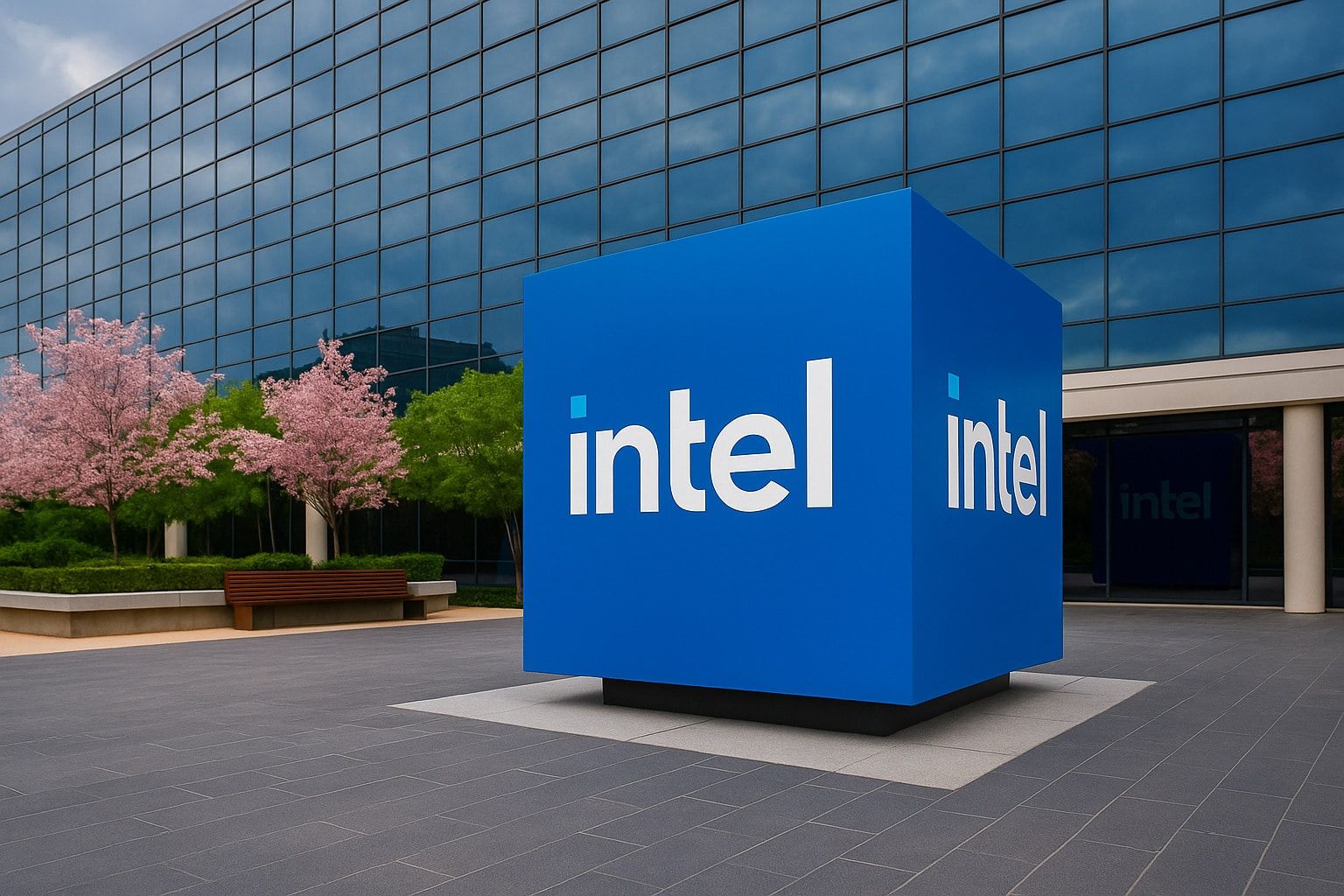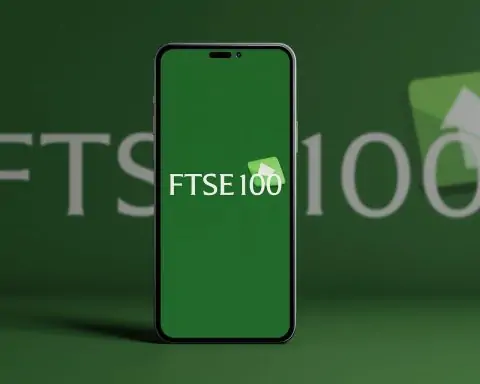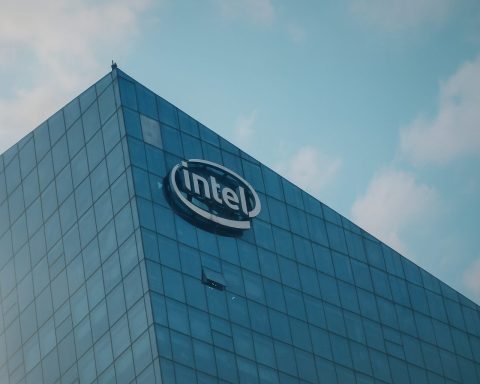Published: November 17, 2025
Intel stock (NASDAQ: INTC) is trading in the mid‑$30s today after a flood of fresh headlines – from new layoffs and a reported server CPU cancellation to sharply divergent analyst opinions and hedge‑fund selling. Together, they’re creating a tug‑of‑war around one of 2025’s highest‑profile turnaround stories.
Intel stock price today – November 17, 2025
As of early afternoon U.S. trading on Monday, November 17, 2025, Intel shares change hands at about $35.40, slightly lower on the day. That’s roughly flat to modestly negative versus Friday’s close, after touching an intraday high near $35.90 and a low just above $35.10.
Key snapshot:
- Last trade: ~$35.40 per share
- Intraday range: ~$35.14 – $35.90
- Market cap: ~$170 billion
- 12‑month range: roughly $17.67 – $42.48 [1]
Despite today’s softness, Intel remains one of 2025’s big comeback names. After a brutal 2024 that produced its first annual loss in nearly four decades, the stock has surged more than 90% in 2025 through late October, driven by aggressive cost cuts, large strategic investments and renewed optimism about its foundry and AI road map. [2]
Why INTC is under pressure today
MarketBeat’s “Why Is Intel Down Today?” summary ties today’s pullback to a mix of bullish commentary, cautious valuation calls and fresh estimate cuts hitting the tape at the same time. [3]
Broadly, today’s Intel headlines fall into a few buckets:
- Bullish:
- A Motley Fool contributor reaffirms a “buy”‑style view on Intel after its 2025 rebound. [4]
- Another Motley Fool piece argues that Intel’s recovery could be a major positive for long‑time design‑software partner Synopsys, reinforcing the idea that Intel’s foundry push is gaining traction across its ecosystem. [5]
- Bearish / cautious:
- Zacks Research cuts its Q3 2026 EPS estimate for Intel nearly in half, from $0.12 to $0.07, and still expects a slight loss for the current fiscal year. [6]
- A detailed valuation piece from Trefis/Forbes argues Intel’s fundamentals are too weak to justify the recent rally and floats downside to around $25 per share. [7]
- Hedge‑fund legend David Tepper has exited Intel entirely, locking in profits after a big move higher. [8]
- Corporate / strategic news:
- A local report confirms hundreds more layoffs in Oregon, underlining how deep Intel’s restructuring still goes. [9]
- A niche but notable server CPU cancellation suggests Intel is still pruning its product roadmap. [10]
- A new enterprise‑storage licensing deal around Intel technology adds a small positive data point. [11]
The net effect: plenty of good news is already in the price, while fresh risks and estimate cuts remind investors that Intel’s turnaround is still fragile.
Headline 1: Trefis warns Intel stock could fall toward $25
One of today’s most eye‑catching headlines comes from Trefis (also syndicated via Forbes) under the title “Intel Stock To $25?”. [12]
Key points from their multi‑factor model:
- Growth: Intel’s revenue has shrunk at an average rate of about ‑7–8% per year over the last three years, and even over the last 12 months the top line is still slightly down despite a modest rebound in the most recent quarter. [13]
- Profitability:
- Trailing‑12‑month operating margin is roughly break‑even (about –0.2%).
- Net margin over the same period is only around 0.4%, which explains why its current P/E ratio looks extreme. [14]
- Financial stability: Debt and cash levels look manageable, with a debt‑to‑equity ratio in the high‑20% range and a healthy cash pile. [15]
Putting this together, Trefis labels Intel’s valuation as “Moderate” but its growth and profitability as “Very Weak,” leading to an overall “Unattractive” stock opinion and the suggestion that $25 is a realistic downside target if sentiment turns. [16]
For traders, this matters because it gives bears a concrete number to point to if Intel breaks below the mid‑$30s support zone.
Headline 2: Zacks cuts Intel earnings estimates again
Also hitting today: a MarketBeat note summarizing a new report titled “Zacks Research Issues Negative Outlook for Intel Earnings.” [17]
Highlights:
- Zacks Research slashed its Q3 2026 EPS estimate for Intel from $0.12 to $0.07, roughly a 40% cut.
- The firm now expects full‑year EPS of about –$0.11, implying Intel could remain only marginally profitable or slightly loss‑making for longer than bulls might like. [18]
- Several other brokers have raised price targets into the $40–$50 range, but the overall Street consensus is still just “Reduce” with an average target around $34.84, slightly below where the stock trades today. [19]
This reinforces a key theme: while the share price has moved sharply higher, earnings expectations are still being revised down in some models, which limits upside near term.
Headline 3: Hedge‑fund titan David Tepper dumps Intel
A widely shared article today notes that David Tepper’s Appaloosa Management sold out of Intel entirely in Q3, after a roughly 50% rally in the stock during that period. [20]
According to the report:
- Tebper trimmed a range of high‑flying AI and tech names and fully exited both Intel and Oracle, redeploying capital into severely beaten‑down consumer stocks like Whirlpool. [21]
- The move is framed less as a verdict on Intel’s turnaround and more as profit‑taking and rotation out of crowded AI trades.
Still, when a high‑profile investor who was riding the AI wave walks away from Intel, it adds psychological pressure: some short‑term traders may follow his lead, especially on a day when valuation and earnings concerns are already in focus.
Headline 4: Fresh Oregon layoffs underline ongoing cost cuts
On the corporate side, Oregon Public Broadcasting reports that Intel will lay off another 669 workers at its Hillsboro and Aloha facilities by the end of 2025. [22]
Key context from that story:
- Intel already cut around 2,500 positions in Oregon earlier this year, bringing total 2025 reductions in the state to more than 3,100 jobs. [23]
- The company’s Oregon headcount has reportedly fallen from a peak of about 23,000 to closer to 18,000 employees. [24]
- Intel’s spokesperson framed the cuts as part of a broader push to become a “leaner, faster and more efficient company” under new CEO Lip‑Bu Tan, who replaced Pat Gelsinger at the end of 2024 after the company reported a nearly $19 billion loss in fiscal 2024. [25]
For investors, the layoffs are a double‑edged sword:
- Positive: They support Intel’s aggressive cost‑cutting and margin‑repair strategy that helped drive its latest earnings beat. [26]
- Negative: They highlight how far the company still has to go to right‑size operations, and they can raise concerns about morale and long‑term R&D capacity in a key hub.
Headline 5: SemiAccurate reports a major server CPU cancellation
Specialist tech site SemiAccurate reports that Intel has canceled a major volume server CPU, calling it a “massive cancellation of a volume product.” [27]
Most of the in‑depth analysis sits behind a paywall, but from what’s publicly visible:
- The decision is framed as short‑term bad news—lost volume and a black eye for the roadmap.
- The author suggests it could be a long‑term positive if it signals a more disciplined approach to product planning, rather than spreading R&D across too many platforms. [28]
For the stock, this kind of headline fuels a familiar narrative: Intel is still trimming and reshaping its server strategy while trying to compete against AMD and a growing field of custom and ARM‑based solutions in data centers.
Headline 6: Licensing and ecosystem news around Intel technology
Not all of today’s news is negative.
Intel VROC licensing with Graid Technology
A press release circulated via Yahoo Finance and other outlets announces that Graid Technology has finalized an Intel VROC (Virtual RAID on CPU) licensing agreement, expanding its enterprise storage offerings built around Intel’s platform. [29]
While dollar amounts aren’t disclosed, the deal:
- Extends the reach of Intel’s storage and platform technologies into high‑performance enterprise RAID solutions.
- Reinforces the picture of Intel trying to build a broader ecosystem moat around its CPUs and chipsets, especially in data‑heavy enterprise workloads.
This is a small positive catalyst—the kind of incremental ecosystem win that typically doesn’t move the stock by itself but supports the longer‑term turnaround story.
Ping Intel / Property Guardian “wildfire” partnership (name confusion risk)
You may also see headlines like “Ping Intel and Property Guardian Partner to Deliver Best-in-Class Wildfire Data to Commercial Insurers.” [30]
Important clarification:
- Ping Intel here is a property‑data intelligence firm focused on insurance, not Intel Corporation the chipmaker.
- The partnership is about integrating wildfire analytics into Ping’s insurance platform, and has no direct connection to INTC’s semiconductor business.
News‑screeners sometimes tag this as “Intel news” purely because of the name, but for Intel shareholders it’s noise, not a stock catalyst.
Headline 7: Mixed but sizable institutional interest
Several MarketBeat alerts today track new filings from institutional investors:
- Cornerstone Advisors LLC disclosed a new stake of about 33,900 Intel shares, worth roughly $759,000. [31]
- Other filings (today and over the weekend) show a steady churn of funds buying and selling Intel, but the big picture remains that about 64.5% of Intel’s float is owned by institutions. [32]
Combined with the Tepper exit, this tells a nuanced story:
- Large investors are far from unanimous—some are still increasing exposure to Intel’s turnaround, others are taking profits or de‑risking.
- The high institutional ownership means Wall Street sentiment can swing the stock quickly when narratives change, as we’re seeing today.
How today’s news fits into Intel’s 2025 turnaround story
To make sense of all this, it helps to zoom out.
Earnings and turnaround backdrop
On October 24, Intel reported a quarterly profit beat, helped by deep cost cuts and improved demand, particularly in data center CPUs. Shares jumped as much as 7.8% on the day and, by then, were up more than 90% year‑to‑date, outperforming even Nvidia and AMD for much of 2025. [33]
That earnings report highlighted:
- Robust interest in CPUs optimized for AI workloads, even while Intel’s cutting‑edge 18A process still lags industry yield standards and isn’t expected to reach “acceptable levels” until 2027. [34]
- A balance‑sheet boost from multi‑billion‑dollar investments by Nvidia, SoftBank and the U.S. government, including an equity stake linked to CHIPS Act funding. [35]
- Aggressive restructuring—Tan has reportedly cut more than 20% of Intel’s workforce over the last couple of years, and the new Oregon layoffs show that process is ongoing. [36]
Today’s headlines in that context
Seen against that backdrop, today’s news flow looks like a classic “consolidation after a big run” moment:
- Bulls can point to:
- Bears and skeptics can point to:
No single headline is catastrophic or transformational on its own. But together they increase the odds of near‑term volatility as the market digests just how much of Intel’s multi‑year turnaround is already embedded in a mid‑$30s share price.
What today could mean for Intel investors
Nothing in today’s news fundamentally rewrites Intel’s long‑term thesis, but it does sharpen a few key questions for anyone watching INTC:
- Is the easy part of the rally over?
After a ~90% year‑to‑date move and a valuation that still sits miles above current earnings power, Intel now needs consistent revenue growth and margin expansion to justify higher prices. Skeptical notes from Trefis and Zacks make it harder for the stock to grind higher on sentiment alone. [43] - Can Tan’s cost cuts coexist with innovation?
Layoffs and product cancellations save money, but Intel still has to catch up technologically—especially in advanced nodes and AI accelerators. Watching what gets cut (and what doesn’t) will be crucial for judging the health of its roadmap. [44] - How long can the ecosystem tailwind last?
Articles highlighting partners like Synopsys and deals with companies like Graid Technology show that Intel’s platform still has pull. The question is whether that ecosystem momentum can translate into sustained revenue growth in 2026–2027, not just headlines in 2025. [45] - Will Wall Street’s stance shift from “Reduce” to “Hold” or “Buy”?
For now, the consensus rating remains “Reduce” with a target below the current price—a clear sign that many analysts think the stock has run ahead of fundamentals. A meaningful rerating would likely require a few more quarters of clean execution. [46]
Bottom line
On November 17, 2025, Intel stock is digesting a busy mix of news:
- A fresh wave of layoffs and a major server CPU cancellation underscore that the turnaround is still in the gritty, messy phase. [47]
- Valuation and earnings concerns are back in focus, thanks to Trefis’ $25 scenario and Zacks’ estimate cuts. [48]
- At the same time, bullish commentary, institutional buying and ecosystem deals show that a significant camp still believes Intel’s recovery has legs. [49]
For traders and investors, that means Intel remains a high‑beta, sentiment‑driven AI turnaround play: the story is improving, but far from settled.
Note: This article is for informational purposes only and does not constitute financial advice. Always do your own research and consider your risk tolerance before buying or selling any stock.
References
1. www.marketbeat.com, 2. www.reuters.com, 3. www.marketbeat.com, 4. www.nasdaq.com, 5. www.fool.com, 6. www.marketbeat.com, 7. www.trefis.com, 8. finviz.com, 9. www.klcc.org, 10. www.semiaccurate.com, 11. www.morningstar.com, 12. www.trefis.com, 13. www.trefis.com, 14. www.trefis.com, 15. www.trefis.com, 16. www.trefis.com, 17. www.marketbeat.com, 18. www.marketbeat.com, 19. www.marketbeat.com, 20. finviz.com, 21. finviz.com, 22. www.klcc.org, 23. www.klcc.org, 24. www.klcc.org, 25. www.klcc.org, 26. www.reuters.com, 27. www.semiaccurate.com, 28. www.semiaccurate.com, 29. www.morningstar.com, 30. www.businesswire.com, 31. www.marketbeat.com, 32. www.marketbeat.com, 33. www.reuters.com, 34. www.reuters.com, 35. www.reuters.com, 36. www.reuters.com, 37. www.nasdaq.com, 38. www.morningstar.com, 39. www.trefis.com, 40. www.marketbeat.com, 41. www.semiaccurate.com, 42. finviz.com, 43. www.trefis.com, 44. www.semiaccurate.com, 45. www.morningstar.com, 46. www.marketbeat.com, 47. www.semiaccurate.com, 48. www.trefis.com, 49. www.marketbeat.com










